TL;DR
Looking for the best free landscape design software? Start with simple, browser-based planners for basic layouts and pair them with a photo-driven visualizer like ReimagineHome.ai to see real curb appeal, hardscaping, and planting options on your actual home. This long-tail approach to backyard design keeps budgets in check, helps solve drainage and small-yard constraints, and previews privacy and low-maintenance choices before you buy. Try it with one photo at ReimagineHome.ai.
TL;DR
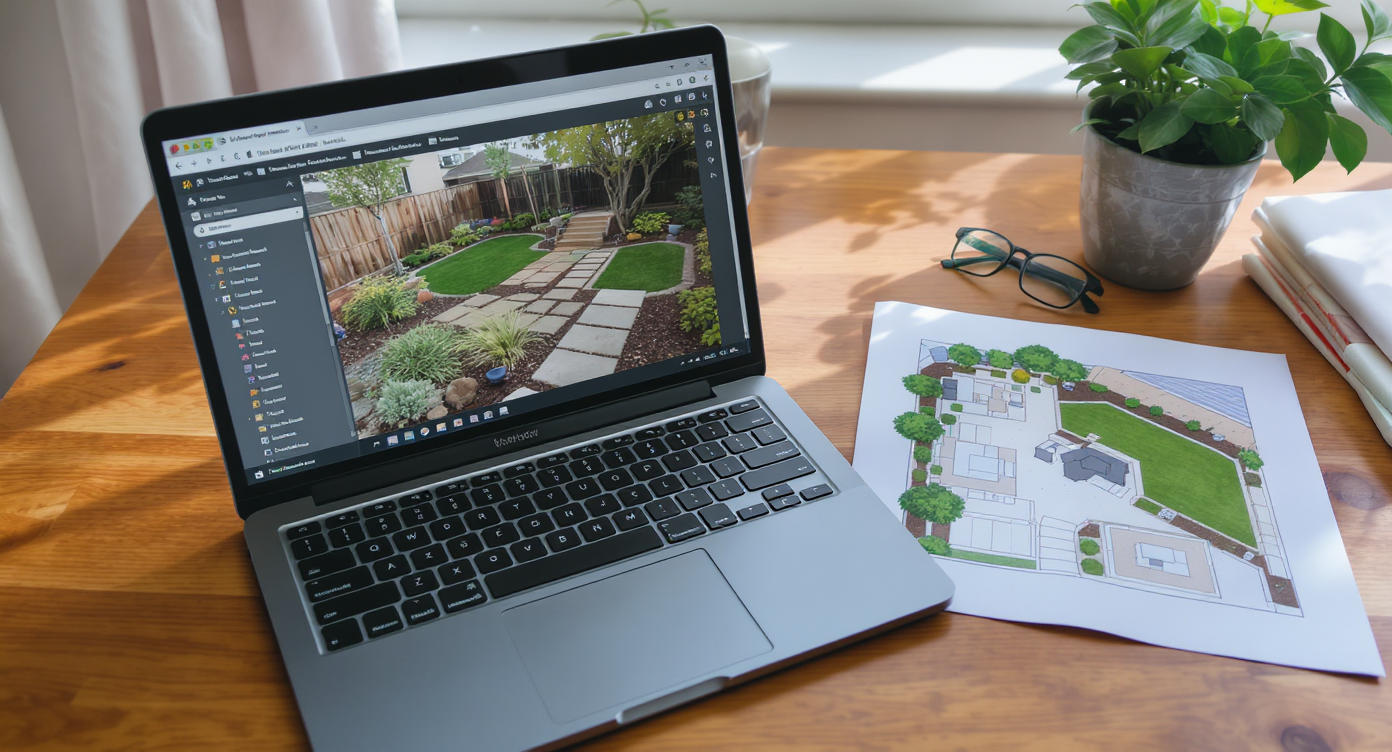
Digital landscape planning paired with photos helps visualize garden layouts before any work begins.
Looking for the best free landscape design software? Start with simple, browser-based planners for basic layouts and pair them with a photo-driven visualizer like ReimagineHome.ai to see real curb appeal, hardscaping, and planting options on your actual home. This long-tail approach to backyard design keeps budgets in check, helps solve drainage and small-yard constraints, and previews privacy and low-maintenance choices before you buy. Try it with one photo at ReimagineHome.ai.
Why Outdoor Design and Curb Appeal Matter Right Now
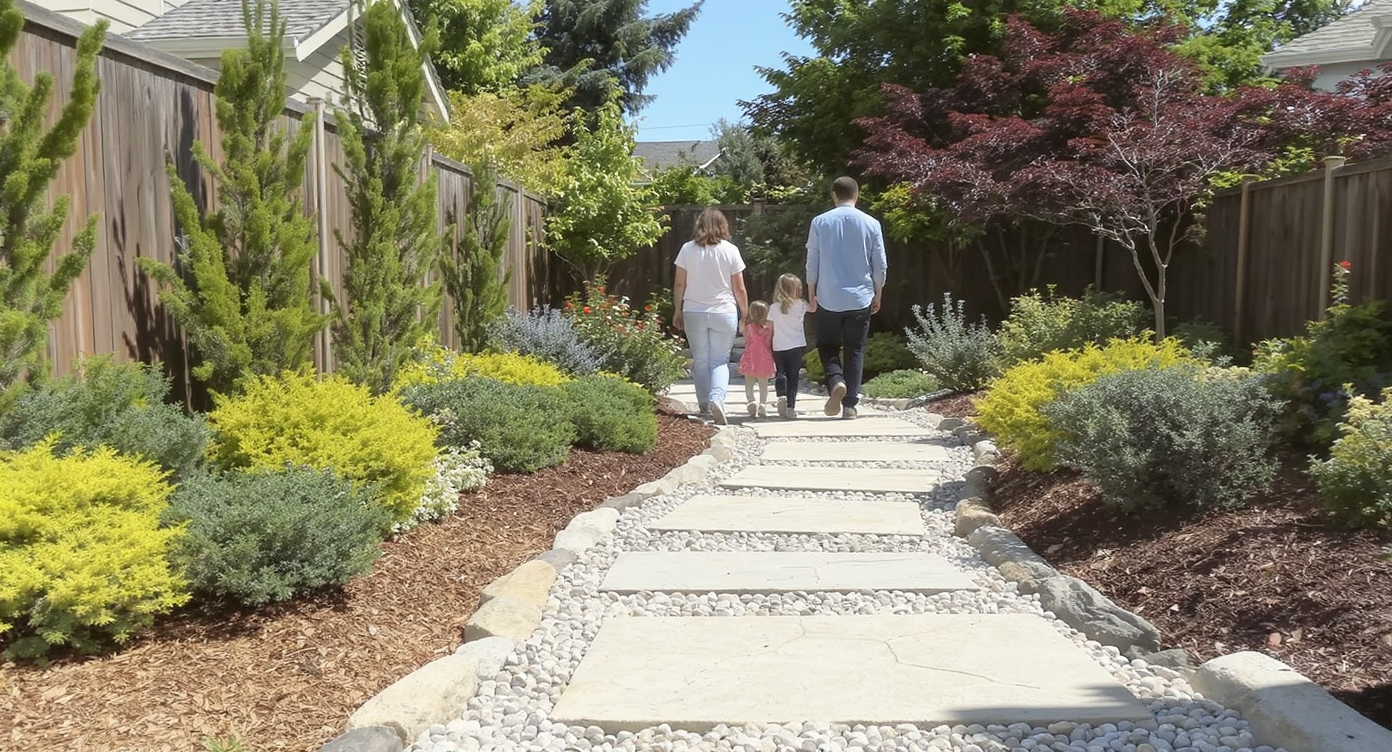
Well-designed garden paths ensure comfort and improve curb appeal with sustainable hardscape choices.
Primary garden paths typically range from 36–48 inches wide for comfortable use. Well-planned landscaping and hardscaping improve daily function, frame the architecture, and can shorten time-on-market by making listings photograph better. Focus your landscape design on clear circulation, right-sized patios, and layered planting that reads well from the street and the sofa—then use visualization to test ideas quickly before you spend.
- At a glance overview — priorities: drainage first, then layout clarity, material durability, plant right-sizing, and lighting.
- Drainage, layout clarity, materials, plant choices, outdoor living flow.
- Modern curb appeal upgrades and realistic before/after expectations.
Anecdote
A 20-by-20-foot urban backyard gained function with a 12-foot permeable paver patio, 42-inch primary path, and two raised beds aligned to sun angles. Visualized first to confirm grill clearances and sight lines, the homeowners avoided over-paving and kept 35% of the area as planting for cooling and pollinators.
Why Landscaping, Gardening & Hardscaping Are Changing
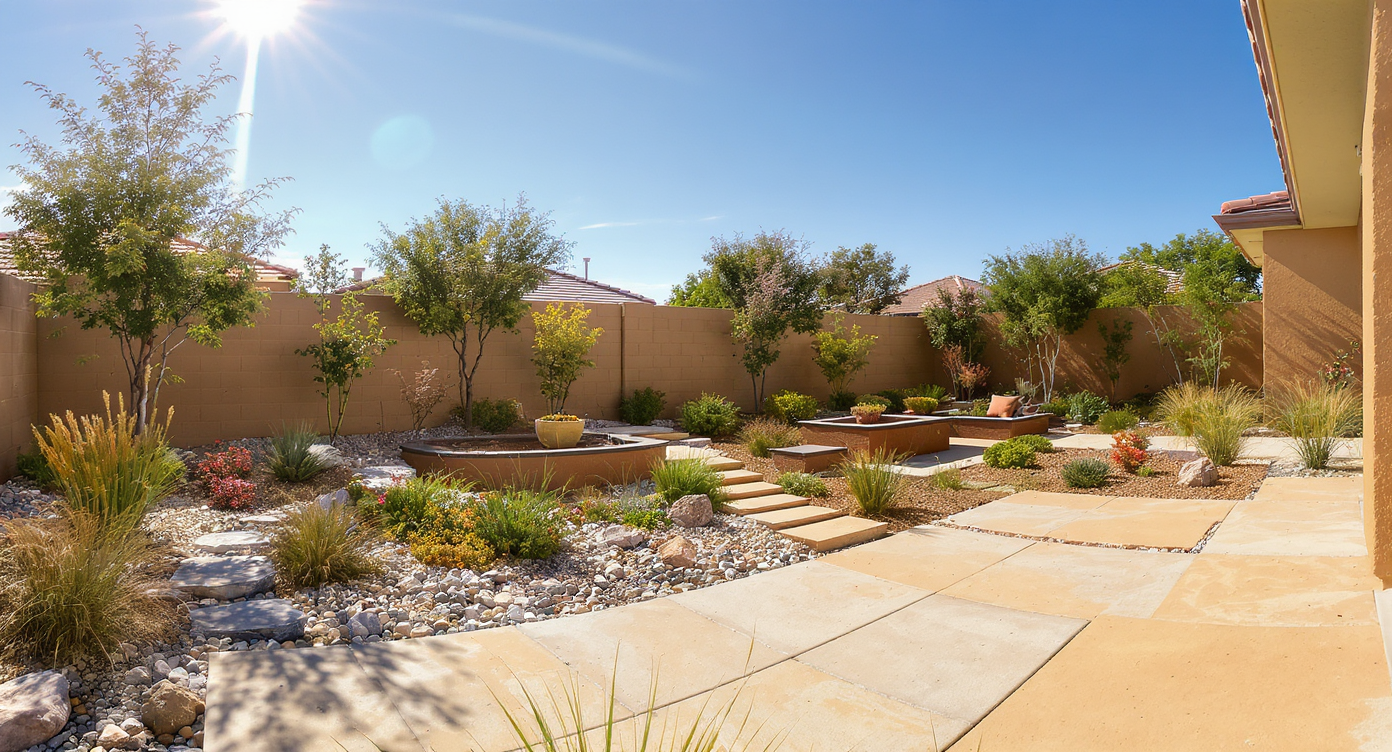
Hardscaping and xeriscaping combine for resilient, low-maintenance yards adapting to climate change.
Hardscape elements often account for 50–70% of a low-maintenance yard budget. As climates warm and water rules shift, homeowners are trading thirsty lawns for drought-tolerant landscaping, permeable paving, and smarter grading that steers stormwater away from foundations. The rise of work-from-home made patios, shade, and quiet planting screens essential extensions of living space. Expectations have evolved: people want resilient materials, native plant palettes, and outdoor rooms that feel designed—not improvised—while still fitting a realistic budget and maintenance plan. Free landscape design software can help sketch a plan, but photo-based visualization bridges the gap between a flat diagram and the real textures, shadows, and seasonal structure you’ll actually live with.
Key Landscaping & Hardscaping Trends (and How ReimagineHome.ai Shows Them)

Patio designs with proper slope and drainage prevent water issues and reflect smart landscaping trends.
Experts recommend a 1–2% slope for patios and walks to move water away from the house without feeling tilted. Today’s best landscaping ideas blend engineering and beauty—clean lines, permeable surfaces, and planting that works 12 months a year.
- Layered planting and year-round structure
- Stone, gravel, and stepping-stone paths
- Outdoor rooms, seating pockets, fire pits
- Drought-tolerant and native planting layouts
- Modern curb appeal changes that boost value
How to Use ReimagineHome.ai to Visualize Yards, Paths & Patios
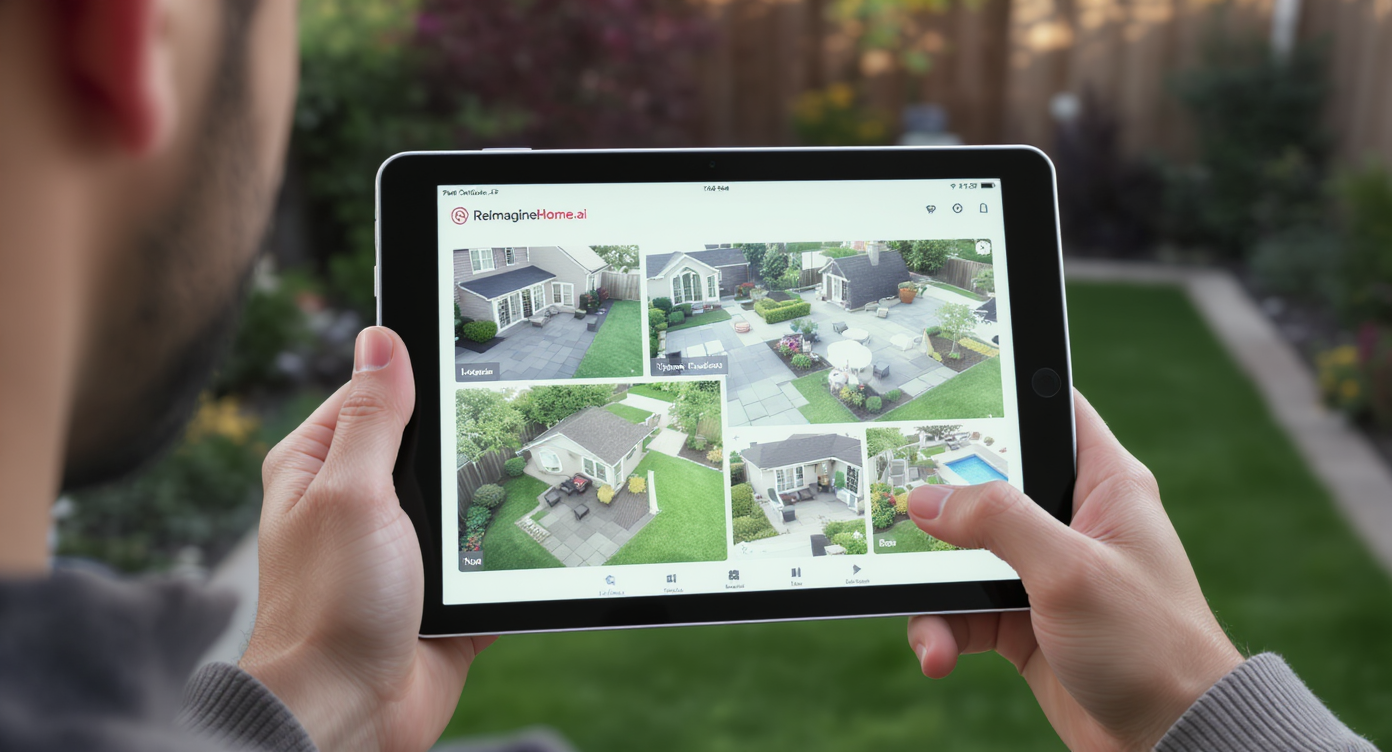
Easily visualize and customize yard, path, and patio ideas with intuitive design tools like ReimagineHome.ai.
For airflow and maintenance, shrubs should be planted 18–24 inches from foundations. That single rule prevents mildew, siding damage, and pruning headaches—and it’s the kind of detail you can sanity-check visually before planting.
- Upload a clear exterior or yard photo.
- Pick a style or function (low-maintenance, modern, family-friendly, pollinator, etc.).
- Test path shapes, patio sizes, steps, and terraces. Aim for 36–48-inch primary walks; give dining patios 24–30 inches per chair for pull-back.
- Experiment with planting layers, lighting, and focal points. Use native shrubs as backbones and weave perennials at 12–18-inch spacing.
- Generate multiple versions and compare before committing—then export your favorite look as a reference set for bids and DIY shopping.
Visualization Scenario
Upload your front elevation at noon and again near dusk to compare curb appeal lighting. Test a 4-foot path vs. a 5-foot path, swap gravel colors, and try a knee-high evergreen hedge for privacy without walling off the entry.
FAQ
- How do I design a small backyard layout?
Start with a 36–48-inch main path, a 10–12-foot dining zone for four, and vertical privacy using trellises or hedges set 18–24 inches off fences. Keep materials to two or three and choose compact, multi-season plants. - How do I create low-maintenance landscaping?
Use 50–70% hardscape/perennial/native mix, drip irrigation, 2–3 inches of mulch, and weed-suppressing edges. Pick drought-tolerant grasses, sedges, yarrow, salvia, coneflower, milkweed, manzanita, rosemary, or bayberry depending on climate. - Can I preview landscaping ideas using a photo?
Yes. Upload a picture to ReimagineHome.ai to visualize patios, plants, lighting, and privacy moves on your real home before you buy materials. - How far should shrubs be from my foundation?
Maintain an 18–24-inch offset from foundations and 24–36 inches from HVAC units for air flow and service access. - What materials work best for modern hardscaping?
Concrete, large-format pavers, natural stone, and gravel. Rule-of-thumb: 4–6 inches of compacted base under patios in freeze–thaw zones; maintain a 1–2% slope away from structures.
Visualize Your Home’s Next Chapter
Mornings on a sunlit stoop. Evenings under string lights with a soft wash on the stone. The quiet of leaves moving along a gravel path. When landscape design aligns grading, hardscape, and planting, a yard becomes a daily ritual rather than a project list. Before you commit budget to pavers or plants, pressure-test the plan on your own facade and fence lines. CTA: “Before you break ground, explore every possibility. Try ReimagineHome.ai with a single photo.”
.svg)

.svg)

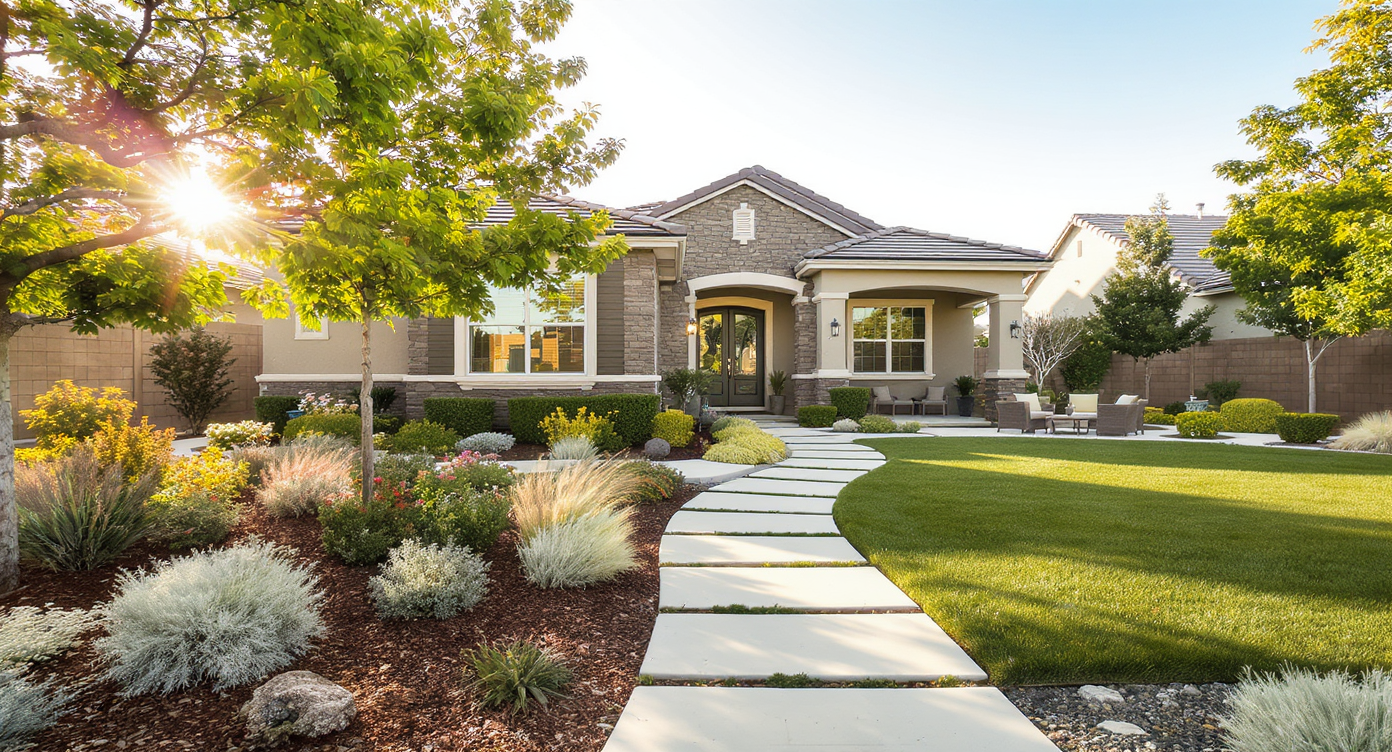
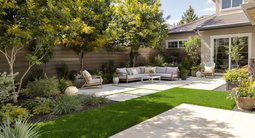
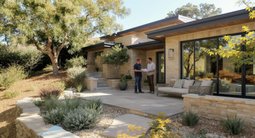


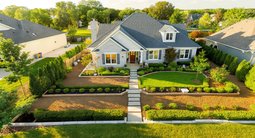
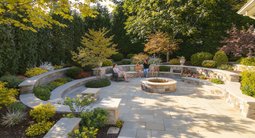


.png)